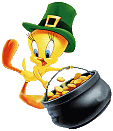
Ireland
Dublin, "dear, dirty Dublin"![[+]](/images/icone-etoile.png)
The capital of Ireland is run through by the Liffey. There is not many road signs, but the city center is of human scale. Dublin, which seems to be out of the turmoil
that characterises other European capitals, has even been elected the European most friendly city due to the youth of its population : 50% of the inhabitants were under 25
in the early 2000.
To set apart their British neighbour, Irish people have painted their mail boxes in green !
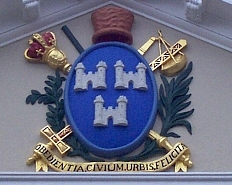
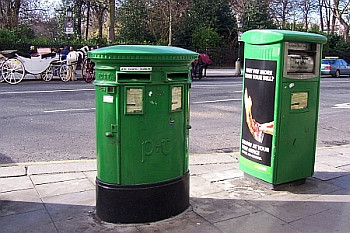
Ha'Penny bridge
Spanning the Liffey, this steel bridge, one of the town's symbol, is often taken in photo.
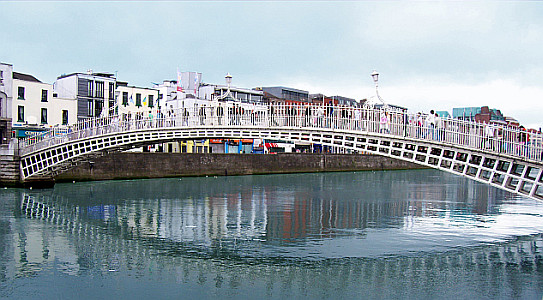
Dublin spire and O'Connell street
The Dublin spire, 120 m (394 ft) high, is the symbol of the modern Dublin. It is located on O'Connell street, a great arterial street, bordered with shops, pubs and restaurants. At the beginning on the street there is a statue of Daniel O'Connell, the founder of the Catholic rallying as a non-political strengh in the early of the 19th century.
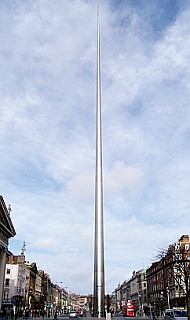
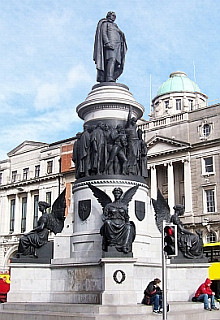
In the gallery you can see photos of the statue of Jim Larkin ("Big Jim"), a trade unionist from the early 20th century, a part of the obelisk in honor to Charles Stewart Parnell, a politician of the 19th century, an original clock and the GPO (General Post Office). The GPO is the place where stood the uprising against the British in Easter 1916. All insurgent leaders were shot by the British except one American citizen (from Irish descent), De Valera, who later became president of the Irish Republic. The south of Ireland finally got its independence in 1922.
The castle
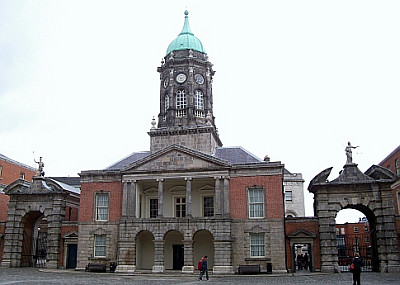
It was built by Anglo Normans who took possession of the town in 1170, but only an original tower went through the centuries.
Since the independance of the country in 1922, the castle has been used for important state events and conferences.
St. Patrick cathedral
It was built during the 12th century in the place where Saint Patrick, Irish Saint Patron, was used to baptising near a well. Nowadays, the cathedral is the Protestant church of Ireland. Just after the entrance, one mustn't miss the "little" statue of Saint Patrick.
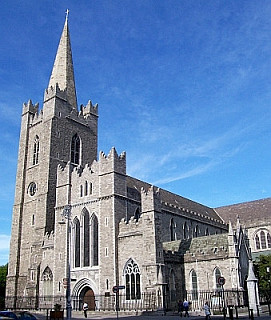
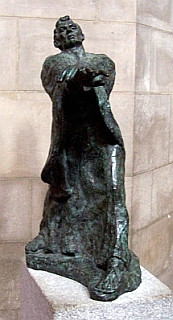
Inside, among others, there is the grave of the writer Jonathan Swift (1667-1745), author of "Gulliver's Travels", a philosophical tale that became a children's story, and the "tale of the barrel". English orphan born in Dublin, Jonathan Swift was dean of St. Patrick's Cathedral (a Protestant place of worship). And he was, of course, a defender of the Irish cause. There is also the door of reconciliation. It is an old wooden door through which two lords wary of each other shook their hands. Too bad the souvenir shop in the bottom of the cathedral isn't strictly separated from the rest of the church...
A few Celtic crosses can be seen in the churchyard adjoining the cathedral.
Christ church cathedral
It was built (previously to Saint Patrick cathedral) during the XIth century under the Vikings supremacy. It was then associated with British who ruled Ireland.
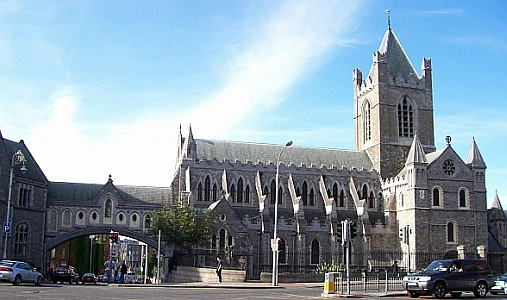
To be seen : the casket enclosing the heart of St. Lawrence O'Toole, the Strongbow monument, an Anglo-Norman who conquered Dublin in the 12th century, the crypt with the treasure, sculptures, and several liturgical items. There are also the mummies of a cat and a rat that were found in the organ pipes...
Custom house
Regarded as a British symbol, this building was burned by the Sinn Fein in 1921 after the declaration of independance. Restored, it now holds government's offices.
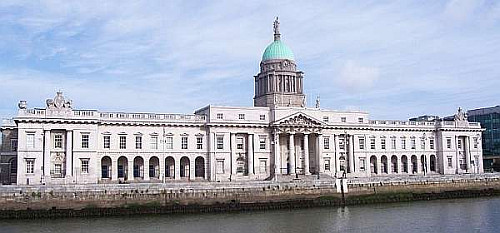
Trinity college
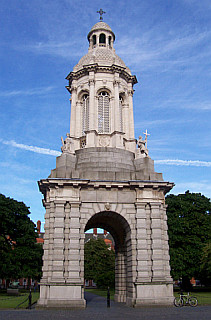
In this great university center, we can't miss the campanile and the bronze sphere from Arnaldo Pomodoro.
But, it is the exhibition of the Kells illuminated book, the oldest Irish book (9th century), that draws people. One also enters the old library which contains two impressive rows of writer and academic busts, as well as the "Brian Boru" harp dating back to the 15th or 16th century.
Molly Malone
Grafton street is a long pedestrian and shopping street. The bronze statue of Molly Malone represents the character of a traditional song, which has become the unofficial anthem of Dublin.
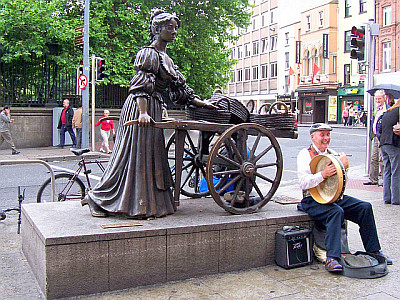
Temple bar
It's the world famous district of pubs ! Ideal to order an Irish beer !
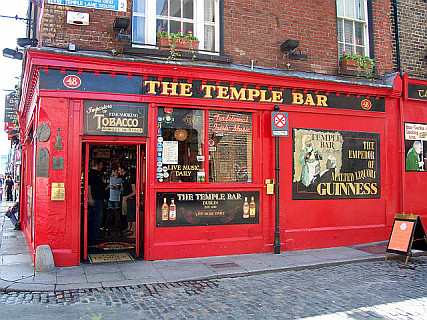
The Georgian houses
There are many of them in Dublin and, wandering from square to square, one can more especially notice the doors (hence the surname of the capital). The best places to find Georgian houses are around Saint Stephen's green park, Merrion square and Fitzwilliam square.
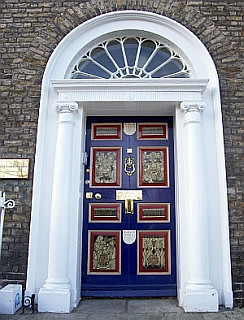
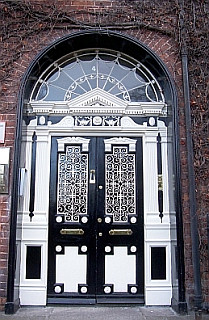
St. Michan church

It is well known for its embossed fiddle wood carvings and the naturally mummified corpses in their cracked coffins stacked in the crypt.
Photos of the mummies are forbidden but one can touch the "little finger" of one of them (allegedly a 12th crusader soldier) : it should bring luck !
Here is a link to the site www.blather.net which displays pictures.
Parks
-
St. Stephen's green is a nice place for a stroll.
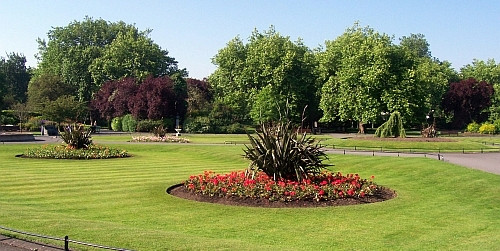
-
At Merrion square, one mustn't miss the colourful statue of Oscar Wilde. The great Irish writer of the second half of the nineteenth century was born in Dublin. He died in Paris where he is buried at P├Ęre Lachaise cemetery. He wrote poetry, plays, essays and novels including "The Canterville Ghost", "The Happy Prince", or "The Picture of Dorian Gray"...
How about a quotation ? Here it is : "We are all in the gutter, but some of us are looking at the stars".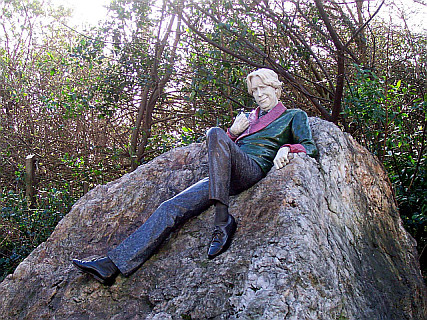
-
At "garden of remembrance", a monument was raised to celebrate the dead for the Irish freedom (of whom many persons from the 1916 Easter uprising). This monument, derived from an Irish tale, shows the turn of Lir children into swans. A Christian cross shaped basin was added in front of the statue. The Irish harp is part of the decoration of the entrance gate.
-
Phoenix park is the largest closed urban park in Europe ! There's also the zoo of Dublin.
Markets and commercial centers
-
The commercial center of Powerscourt is atypical, with a caf├ę in the level floor and a stair jutting out over the courtyard to access the floors.
-
Near Powerscourt, the covered market is a delight for those who want to find CDs, books or second hand clothes.
-
Saint Stephen's green commercial center is designed in an art deco style.
St. Augustin church
Here is a church where one can pray peacefully, without the tourist comings and goings. Nice inside with gothic altar piece (no photo of this altar...).
Marino Casino
In the outskirt of Dublin, the Marino Casino pavilion is a masterpiece of neo-classic architecture. Quite amazing, there are 16 rooms in all !
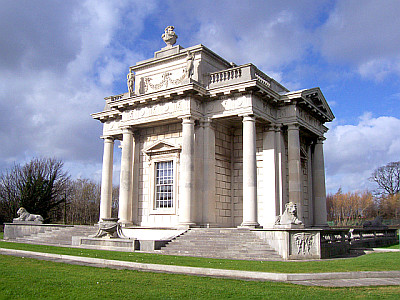
Knightsbridge bar
A visit of Dublin wouldn't be complete without an Irish stew, a Guiness, an Irish coffee and an Irish dance show ! It's possible to do everything at Knightsbridge bar, located along the Liffey, near O'Connell street.
The tap dancing shoes are called hard shoes. Note that for dance without tapping, girls can wear soft shoes (also called ghillie).
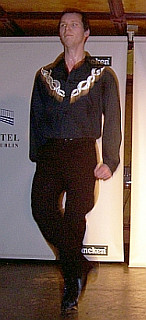
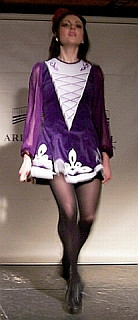
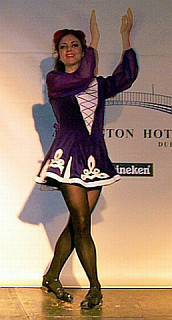
More visits
-
Four courts, along the Liffey.
-
National museum, National gallery, natural history museum, botanical gardens.
-
The National Wax Museum Plus was closed in 2007 but it has since reopened.
-
The National Leprechaun Museum opened in 2010 (so after my stay)...
-
The replica of the 3 masted barque "Jeanie Johnston" can be visited since late 2010.
-
Bank of Ireland : it is an impressive building, in front of Trinity college.
-
Chester Beatty library.
-
Dubliana : multimedia travel throughout Dublin history. Located near Christ church cathedral.
-
Viking splash : another way for visiting the town with amphibious passings...
-
Buildings of the business center.
-
The harbour where one can see and hear gulls !
-
The old gaol of Kilmainham can be visited...
-
Viking splash : visite de la ville avec passage amphibie...
